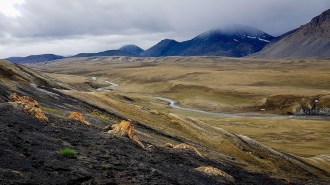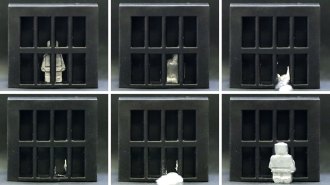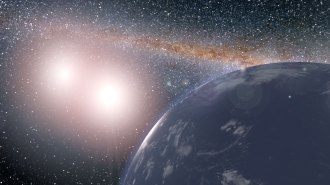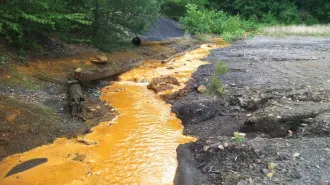News
-
 Life
LifeFossils suggest early primates lived in a once-swampy Arctic
Teeth and jawbones found on Ellesmere Island, Canada, suggest that two early primate species migrated there 52 million years ago.
By Freda Kreier -
 Materials Science
Materials ScienceThese shape-shifting devices melt and re-form thanks to magnetic fields
Miniature machines made of gallium embedded with magnetic particles can switch between solid and liquid states.
-
 Health & Medicine
Health & MedicineProcrastination may harm your health. Here’s what you can do
Scientists have tied procrastination to mental and physical health problems. But don't panic if you haven't started your New Year's resolutions yet.
By Meghan Rosen -
 Astronomy
AstronomyLots of Tatooine-like planets around binary stars may be habitable
A new simulation suggests that planets orbiting a pair of stars may be plentiful, and many of those worlds could be suitable for life.
-
 Paleontology
PaleontologyA bird with a T. rex head may help reveal how dinosaurs became birds
The 120-million-year-old Cratonavis zhui, newly discovered in China, had a head like a theropod and body like a modern bird.
-
 Earth
EarthEarth’s inner core may be reversing its rotation
In the past 13 years, the rotation of the planet’s solid inner core may have temporarily stopped and then started to reverse direction.
By Nikk Ogasa -
 Animals
AnimalsA rare rabbit plays an important ecological role by spreading seeds
Rabbits aren’t thought of as seed dispersers, but the Amami rabbit of Japan has now been recorded munching on a plant’s seeds and pooping them out.
-
 Environment
EnvironmentRare earth elements could be pulled from coal waste
The scheme would provide valuable rare earth metals and help clean up coal mining’s dirty legacy.
By Erin Wayman -
 Astronomy
AstronomyNew data show how quickly light pollution is obscuring the night sky
Tens of thousands of observations from citizen scientists spanning a decade show that the night sky is getting about 10 percent brighter every year.
-
 Animals
AnimalsChicken DNA is replacing the genetics of their ancestral jungle fowl
Up to half of modern jungle fowl genes have been inherited from domesticated chickens. That could threaten the wild birds’ long-term survival.
By Jake Buehler -
 Health & Medicine
Health & MedicineToo much of this bacteria in the nose may worsen allergy symptoms
Hay fever sufferers have an overabundance of Streptococcus salivarius. The mucus-loving bacteria boost inflammation, causing an endlessly runny nose.
-
 Materials Science
Materials ScienceWant a ‘Shrinky Dinks’ approach to nano-sized devices? Try hydrogels
Patterning hydrogels with a laser and then shrinking them down with chemicals offers a way to make nanoscopic structures out of many materials.